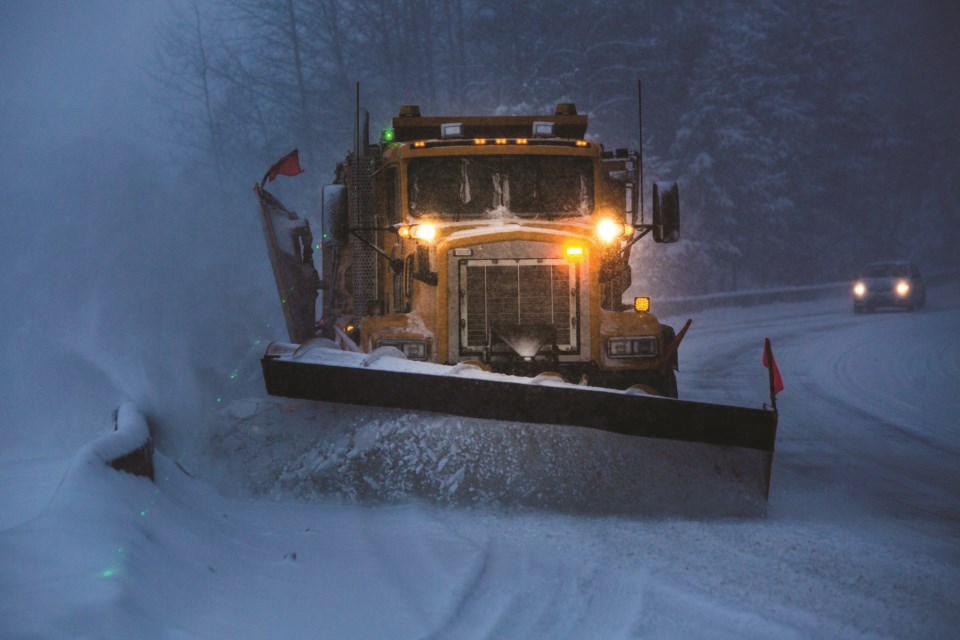The Resort Municipality of Whistler (RMOW) has unveiled its new snow and ice removal policy, which designates priority areas for snow clearing on municipal roads, trails, sidewalks and the Village Stroll.
Although the RMOW already has procedures in place for snow removal, the new policy formalizes the process and updates it to better reflect the reality on the ground.
“The roads policy is outdated and does not reflect the current level of service, and the resort operations team was relying on an operational procedure instead of council policy,” explained Andrew Tucker, the RMOW’s transportation manager, at the March 8 council meeting. “Since the policy reflects the work already being done out in the community, the service level to the community will not change due to the adoption of this policy.”
Municipal staff decided to review its existing snow-removal procedures in response to an ongoing case in B.C. Supreme Court that saw a woman sue the City of Nelson, alleging negligence over its downtown snow removal after she was injured during a heavy snow event in January 2015. Following the advice of the Municipal Insurance Authority of BC, Nelson officials passed an expanded policy to ensure municipal immunity in how it removes snow—with several other local governments following suit.
There are two municipal crews responsible for snow and ice management in Whistler: the infrastructure services roads department, comprised of 18 equipment operators and a supervisor that run two shifts a day in the winter months; and the resort experience operations department, which counts three staff working from 5 a.m. to 3 p.m. seven days a week in the winter. Both crews plow snow, control ice and remove excess snow when appropriate.
The new policy is designed to ensure pedestrian and vehicle routes are passable for use. “So what does passable mean?” asked Tucker. “Well, that means if you are driving a vehicle that is well-maintained, has good snow tires, or you’re a pedestrian with good tread on your shoes, then you shouldn’t have a problem at all on our roads, our sidewalks, and our Valley Trail.”
The policy also sets three different priority levels for snow-plowing roads, based on traffic volumes and whether it’s a common route for transit and/or emergency responders.
“So we looked at the community and basically mimicked in this policy what the operations crews are already doing out there, but this represented it in a more effective way,” Tucker noted.
Municipal trails and pedestrian walkways were also divided into two priority categories, although the criteria differed somewhat from roads.
“For sidewalks and trails, we looked at the highest commuter-use trails closest to the village, the Stroll itself, pedestrian commuter routes to elementary schools like Myrtle Philip and Spring Creek, and then the other trails were Priority 2 trails after that,” explained Derek Jazic, the RMOW’s manager of resort operations.
The new policy does not apply to Highway 99 and private locations, which the RMOW is not tasked with maintaining.
The municipality is replacing aging snow-removal machinery, expected by the end of the month, and “we’ll have pretty much a brand new fleet for parks and trails for this upcoming November,” Tucker noted.
For maps laying out all of the RMOW's snow-clearing priority zones, check out the council package from the March 8 meeting at https://pub-rmow.escribemeetings.com/FileStream.ashx?DocumentId=12216.





